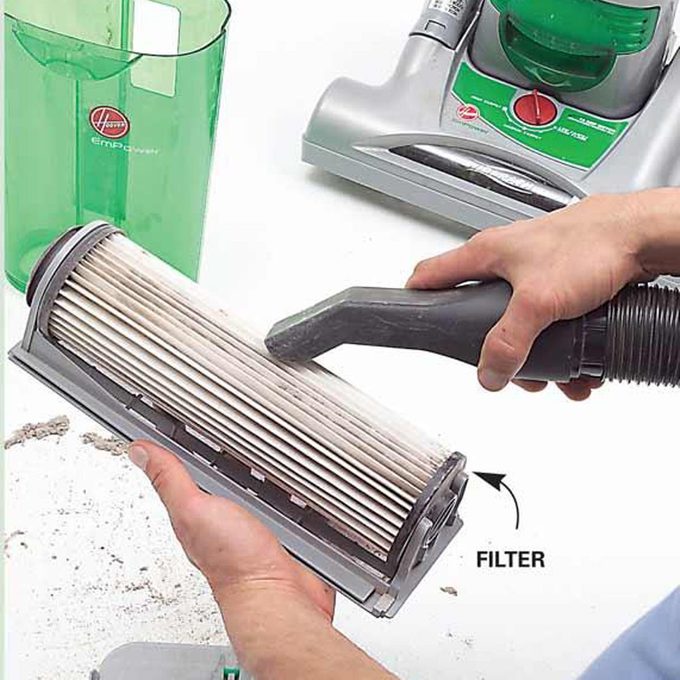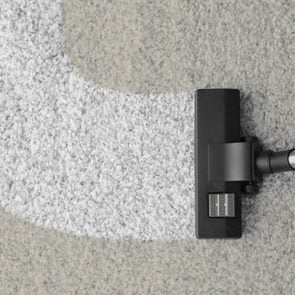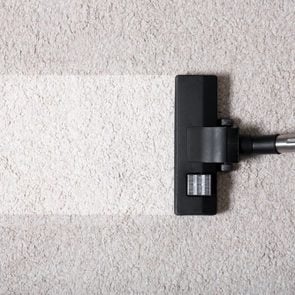Are You Making This Expensive Mistake With Your Vacuum?
With a little know-how you can improve the performance of your vacuum—and save yourself a costly repair.

The vacuuming mistake everyone makes
“Bagless vacuums are good for business,” according to one vacuum repairman. The problem isn’t design or manufacturing but user negligence. Vacuum owners empty the dirt canister but often don’t clean the filters. Plugged filters lead to an overworked motor. And sooner or later, the motor burns out. Motor replacement costs at least $100. (You’re also probably making these mistakes with your kitchen appliances.)
People avoid cleaning filters because it’s a messy job. The typical method is to tap the filter against the inside of a trash can until most of the dust falls off. But this raises a thick cloud of dust and doesn’t get the filter completely clean. Here’s a faster, neater, more thorough approach: Take the vacuum out to the garage and clean the pleated filter with a shop vacuum. Some pleated filters have a special coating that you can damage, so be gentle with the shop vacuum nozzle. Clean pre-filter screens and post-filters the same way. (Here are more clever new uses for air compressors you never thought to try.)
The right vacuuming technique, combined with the right filters, bags and machine, has a significant impact on how much dust remains in your carpeting.
To control dust, keep the following vacuuming tips in mind:
- Vacuum high-traffic areas twice a week and the rest of the carpeting and large area rugs at least weekly.
- Make numerous slow passes over the same area in all directions (fast passes stir up more dust than is being sucked up).
- Use certified True High-Efficiency Particulate Air (HEPA) filters to remove invisible particles and allergens. Look for the word ‘True” on the label.
- If you have allergies, upgrade to a sealed-body bagged vacuum with an airtight “sealed filtration” system that works together with a True HEPA filter. This means all of the exhaust will exit through the HEPA filter instead of leaking dust back into your house through the machine’s housing. Sealed-body vacuums have rubber seals or gaskets around the lid and filter and will last 10 to 20 years. Brands include Riccar, Miele and Sanitaire. (Here’s how often you need to replace everything in your home.)
- Buy high-quality vacuum bags. Inexpensive 2- or 3-ply paper bags leak more dust. Higher-quality cotton-lined paper bags are better, and top-quality synthetic cotton HEPA bags are the best. Bag capacity matters too. Higher-capacity bags capture more, smaller particles that would have otherwise clogged the filter.
- Clean all your bagless vacuum filters regularly and replace them every three months.
- Turn off the agitator brush on hard flooring so you’re not blowing dust into the air.
- Maintain your vacuum: Empty the canister frequently (always outside) and change bags and belts when needed. Keep the agitator brush free of hair and other material, and check the vacuum for cracks and loose hinges and get it serviced every so often to keep it running smoothly.
Next, find out 13 things you should never vacuum.






